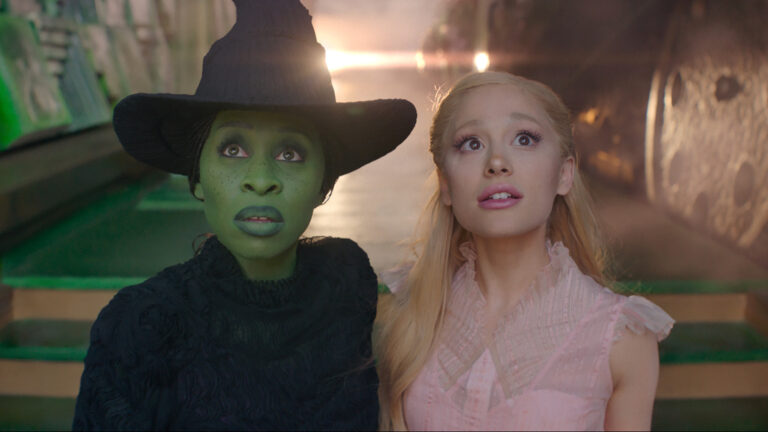The Rev. Edward Casaubon had a handsome, intelligent wife, but squandered his marriage—along with his health and his life—in a futile attempt to write his masterwork, The Key to All Mythologies. When she wrote Middlemarch, George Eliot probably intended for readers to scoff at the dusty and deluded scholar-cleric trying to unlock the secrets of ancient myth. But I can relate to the good reverend. Like other film and comic book geeks, I’ve wasted hours trying to find the key to some modern folk mythology when I could have enjoyed time with my bright, beautiful bride.
But unlike Casaubon, I have actually found a key. Not to all mythologies, of course, but to one of the most intriguing—Christopher Nolan’s series of Batman films.
The interpretative key to the Batman films is obvious once you notice what is missing.
Batman Doesn’t Know Jesus
Of course, you might say, Jesus is absent from almost all mainstream films. True, but not wholly true. While direct acknowledgement of Jesus is rare in movies today, there are few epic trilogies set in modern times in which allusions to Christ do not appear at all. Yet during the entire 456 minutes of the Batman series, thousands of characters appear in a diverse urban landscape, and not a single image or symbol alludes to an awareness of Jesus. (See update below.) There are no priests or nuns, no Bibles or churches. In the one funeral scene in the film, the reading is not from Scripture but from . . . Charles Dickens’s A Tale of Two Cities.
Nolan has scrubbed all references to Jesus—intentionally I believe—in order to present a pre-Christian pagan universe, a world in which Christ’s earthly ministry has not yet begun.
Once we acknowledge this fact, we’re limited in the number of applicable interpretations of Nolan’s Batman myth. For example, the overused redemptive template, in which Batman is viewed as a Christ-figure because he sacrifices himself for others, fails to account for the central themes of the series. [1] Likewise, the cheap political readings that rely on a Christianized view of equality fall short of accounting for the Nolan’s layered, nuanced storytelling.
Nolan’s Batman is a unique exercise in myth-making, a film set in a pre-Christian, pagan universe that resembles a post-Christian secular world.
Batman and the French Theorist
Applying the concepts of a French literary theorist to explain a superhero franchise is generally the type of useless activity that prevents graduate students in humanities from finding employment. But I think, and as others have noticed, the insights of René Girard can shed light on Nolan’s film series.
Girard is a historian turned literary critic who developed a set of ideas that, among other uses, provides a suitable explanatory framework for Nolan’s Batman series. [2] One of his Girard’s key concepts is that humans learn to desire by imitation. Just as an infant learns to speak by imitating the language of his or her parents, we learn how to desire by imitating what others desire. When we’re toddlers, we want the toys the other toddlers want—a behavior that continues throughout adulthood. This imitation of desire, what Girard dubs “mimetic desire,” can either be positive or negative, leading to mutual love or escalating to violence.
“Positive mimetic desire,” Girard says, “works out to recapitulate the Golden Rule: we desire for the other what the other desires for her or himself.” Most often we learn how to want the good for others by imitating a model of positive behavior. This is what motivates Bruce Wayne to become Batman. As Wayne explains in The Dark Knight Rises, he dons a mask to hide his individuality, so that “anyone could be Batman.”
In the beginning of the series, Wayne believes that if only the people of Gotham have a positive role model, they will be able to overcome the lawlessness, violence, and chaos that constantly threaten the city. But by the second film, The Dark Knight, Wayne discovers that some citizens are imitating his example too literally by becoming mask-wearing vigilantes. He realizes that they need a more noble model to imitate—Gotham’s district attorney, Harvey Dent. [3]
Mimetic desire can also lead to envy, which escalates into conflict and violence—what Girard calls “mimetic rivalry.” Girard argues that such rivalries can develop to the point where people forget the object of their desire and begin to imitate their rival’s antagonism. This antagonism and violence, which starts at the individual level, can eventually spread throughout the community and lead to a “war of all-against-all.” The violence threatens to destroy everyone involved, unless the antagonism is channeled toward a “war of all-against-one,” violence against a sacrifice—the scapegoat.
The Scapegoat Process
According to Girard, the mimetic crisis is resolved when the community singles out a scapegoat, the one whose death absorbs the violence in the community and brings resolution to the conflict. Over time, the community mistakenly comes to believe that the scapegoat was at once the cause as well as the all-powerful cure for the crisis. The pagan concept of the gods, Girard says, emerges from this misrecognition. The deliverance brought about by the sacrifice of the scapegoat forms the basis of archaic pagan religions.
The scapegoat is a recurring theme in Nolan’s films. For instance, the Joker says that his violence can be averted if the citizens of Gotham will murder the Wayne Enterprises employee who threatened to reveal the identity of Batman. Other examples could be mentioned, but the most prominent instance of the scapegoat process is the figurative murder of Batman at the end of The Dark Knight.
“The brutal elimination of the victim [the scapegoat] would reduce the appetite for violence that possessed everyone a moment before, and leaves the group suddenly appeased and calm,” Girard says. This is the situation at the beginning of The Dark Knight Rises. The scapegoating of Batman has lead to eight years of decreased violence in Gotham. The process recurs in this movie, but by the end of the film Batman has been transformed from scapegoat to sacred symbol.
Batman and Satan
Before he becomes a symbol, Bruce Wayne must first become a hero. At the beginning of the first film, Batman Begins, Wayne is in self-imposed exile in a third-world prison beginning his day with a vicious assault. “You’re in Hell, little man,” his attacker says. “And I am the Devil!”
“You’re not the Devil,” Wayne replies. “You’re practice.”
The first fight of the film series is indeed practice—and foreshadowing—since Wayne will fight the Devil in three incarnations: Ra’s al Ghul (Batman Begins), the Joker (The Dark Knight), and Bane (The Dark Knight Rises).
Each of these villains fills what Girard considers the role of Satan: to personify the mimetic crisis:
To the question How can Satan cast out Satan? (Mark 3:23), the answer is unanimous victimization.
On the one hand, Satan is the instigator of [crisis], the force that disintegrates communities; on the other hand, he is the resolution of [crisis] in unanimous victimization. This trick of last resort enables the prince of this world to rescue his possessions in extremis, when they are too badly threatened by his own disorder. Being both a principle of disorder and a principle of order, Satan is truly divided against himself.
Batman’s three main nemeses play the dual role of being the personification of Satan and personification of the crisis. In each of the films, they seek to achieve their goal—bringing the apocalypse to Gotham—by tempting the people to destroy themselves and their neighbors. Without Batman to play the scapegoat, though, the diabolic forces would destroy humanity and thus end the pleasure they get in tormenting God’s creatures.
Death of the Sacred Myth—and of Batman
While God’s restraining grace exists in Gotham, Christ has not yet come, so the Devil remains unbound. Gothamites lack the “good news” of Christ, the only power that can destroy paganism’s sacred myths and end the cycle of violence. As Girard explains,
In the Bible, the false or insignificant causes of mythical violence are effectively dismissed in the simple and sweeping statement, They hated me without a cause (John 15:25), in which Jesus quotes and virtually summarizes Psalm 35—one of the “scapegoat psalms” that literally turns the mob’s mythical justifications inside out. Instead of the mob speaking to justify violence with causes that it perceives as legitimate, the victim speaks to denounce the causes as nonexistent.
Where the light of truth shines, noble lies cannot endure. Ritual sacrifice and scapegoat murder lose their power and appeal in a world where the lamb has laid down his own life.
Nolan has created a fascinating vision of what our world could look like if Christ has not yet come to earth. But by the time we leave the theater, we are relieved that we do not live in Gotham. We can admire Bruce Wayne, but we can’t envy him. Gotham may have Batman, but we have Jesus.
____________________
(1) Some Christians may also interpret the title of the latest film—The Dark Knight Rises—to be an allusion to resurrection, since Batman dies (figuratively) in the second film of the trilogy. The more obvious reading is that the “rise” refers to the rise of Bruce Wayne’s will to live, which is displayed in a key scene.
(2) I’m not a “Girardian.” Girard’s ideas provide an intriguing framework for literary and anthropological analysis. But I’m not sure they can bear the load for serious theological reflection.
(3) Many viewers of the film are perplexed why Bruce Wayne and Jim Gordon consider Harvey Dent to be a better man they they are. In the films he appears, especially to Christian viewers, to be an underwhelming model of heroism. But Dent embodies many pagan virtues such as courage and honor that are often idealized in pre-Christian cultures, which makes him a more suitable hero in the context of the series.
Update: As many of the commenters—and my own daughter—have pointed out, the tombstones of Bruce Waynes parents both had crosses. Readers also say that the man who ran the orphanage was a priest, though I don’t recall him wearing a priest’s collar. Whatever the case, I was wrong about the complete absence of Christian religious sympbols. However, in the interest of saving my theory, which I think is still applicable, (you didn’t think I’d give it up that easily did you?) I would say that the crosses could be a sign that Jesus indeed had already come to earth but that Christianity had not yet taken root in Gotham. Christianity would be, at best, a minor religion in a city dominated by a pagan ethos.
Involved in Women’s Ministry? Add This to Your Discipleship Tool Kit.
 We need one another. Yet we don’t always know how to develop deep relationships to help us grow in the Christian life. Younger believers benefit from the guidance and wisdom of more mature saints as their faith deepens. But too often, potential mentors lack clarity and training on how to engage in discipling those they can influence.
We need one another. Yet we don’t always know how to develop deep relationships to help us grow in the Christian life. Younger believers benefit from the guidance and wisdom of more mature saints as their faith deepens. But too often, potential mentors lack clarity and training on how to engage in discipling those they can influence.
Whether you’re longing to find a spiritual mentor or hoping to serve as a guide for someone else, we have a FREE resource to encourage and equip you. In Growing Together: Taking Mentoring Beyond Small Talk and Prayer Requests, Melissa Kruger, TGC’s vice president of discipleship programming, offers encouraging lessons to guide conversations that promote spiritual growth in both the mentee and mentor.

































